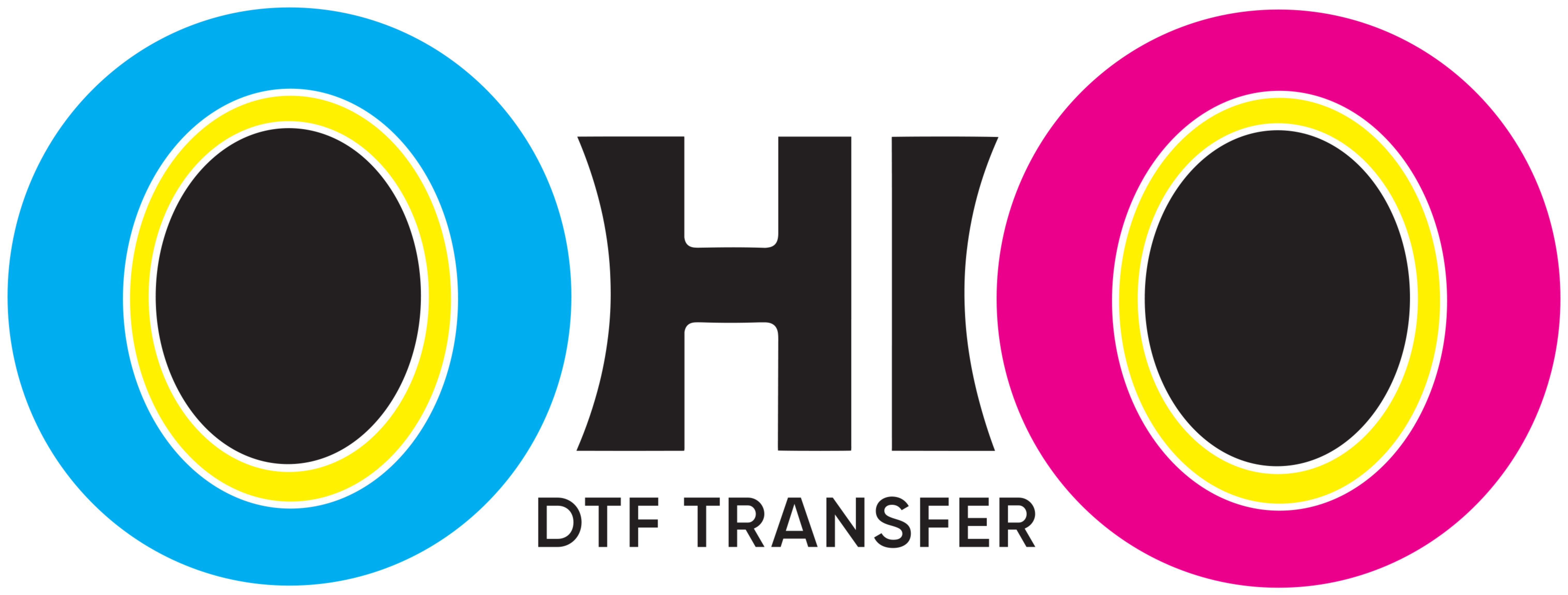A Comprehensive Guide to Direct-to-Film Printing
What Are DTF Transfers ? - DTF (Direct to Film) Transfers are an innovative printing technology that allows high-quality designs to be transferred onto various fabrics. Unlike traditional printing methods, DTF uses a special film to apply the ink, making it versatile, durable, and ideal for creating vibrant and detailed prints on T-shirts and other textiles.
What Is a DTF Transfer?
A DTF transfer is a process where a design is printed onto a special PET (polyethylene terephthalate) film and then transferred onto fabric using adhesive powder and heat. Unlike traditional printing methods, DTF transfers do not require pre-treatment and can be applied to a wide variety of materials, making them highly versatile. However, the quality of the transfer largely depends on the tools and materials used, such as DTF transfer film, adhesive powder, and compatible inks.
What Does DTF Transfer Mean?
The term DTF transfer refers to the process of transferring designs directly from a film to a substrate, typically fabric, using heat and pressure. Also, the method eliminates the need for complex pre-treatment steps, making it a more streamlined option for small businesses and DIY enthusiasts.
What are Direct to Film transfers ?
What are Direct to Film transfers are known for their ability to produce vibrant, durable, and flexible prints. They can be used on a variety of fabrics, including cotton, polyester, blends, and even some hard surfaces. Unlike sublimation, which only works on light-colored polyester, DTF can transfer onto dark or light fabrics without compromising the quality of the design.
What Is UV DTF Transfer?
UV DTF transfer is a specialized version of DTF designed for hard surfaces such as glass, metal, and plastic. The process uses UV inks that are cured with a UV lamp, ensuring a durable and vibrant print. However, UV DTF transfers require different tools, such as a UV curing machine and specialized adhesive films, making them more suitable for advanced users.
What Temp for DTF Transfers?
The recommended temperature for applying DTF transfers is typically around 165°C (329°F). The heat press should be set to this temperature and applied for about 10-15 seconds. However, depending on the fabric type and adhesive used, slight adjustments may be necessary to achieve the best results.
How Do Direct to Film Transfers Work?
Step 1: Preparing the Design
Create or select a digital design using graphic software. Ensure the design is compatible with DTF printing requirements, such as color profiles and resolution.
Step 2: Printing onto the Film
Print the design onto a specialized DTF transfer film using a DTF printer. Apply the adhesive powder evenly over the printed film and cure it by heating.
Step 3: Application
Place the prepared film onto the fabric with the design facing down. Use a heat press machine to transfer the design onto the material.
Step 4: Final Touches
After pressing, peel off the film to reveal the transferred design. For best results, press the fabric once more for additional durability.
DTF transfers offer several advantages that make them a preferred choice for fabric printing:
Versatility
DTF transfers work on a wide range of materials, including cotton, polyester, and blends.
High-Quality Prints
The colors are vibrant, and the prints have excellent detail and durability.
Cost-Effective
Compared to traditional methods, DTF printing is more economical for small to medium-scale productions.
Easy Application
DTF transfers eliminate the need for pre-treatment, reducing the overall production time.
Eco-Friendly
The process uses less water and produces minimal waste, making it a sustainable printing solution.
What Is DTF Heat Transfer?
DTF heat transfer is the application of the cured DTF film onto a substrate using a heat press. This step is crucial for ensuring the durability and vibrancy of the design. Also, it allows the design to firmly adhere to the fabric, making it resistant to washing and wear.
Direct to Film Transfers Descriptions for T-shirt printing
Customization at Its Best
DTF printing supports complex and multi-color designs, making it perfect for creating standout T-shirts.
Durability
The prints are resistant to washing, fading, and cracking, ensuring long-lasting wear.
No Material Limitations
From light to dark fabrics, Direct to Film transfers perform exceptionally well, maintaining consistent quality across different T-shirt types.
Direct to Film Transfers
When compared to traditional printing methods, such as screen printing or sublimation, Direct to Film transfers stand out for their unique benefits:
Screen Printing
- Pros: Ideal for bulk orders, vibrant colors.
- Cons: Limited to certain materials, not cost-effective for small runs.
Sublimation
- Pros: Excellent for polyester and light-colored fabrics.
- Cons: Cannot print on cotton or dark fabrics.
Direct to Film Transfers
- Pros: Versatile, cost-effective, works on all fabric types and colors.
-
Cons: Requires specialized equipment and film.
How to Choose the Right DTF Transfer Material
When working with Direct to Film transfers, selecting the appropriate materials is crucial:
- Film Quality: Choose a high-quality transfer film to ensure sharp and vibrant prints.
- Adhesive Powder: Use the correct adhesive powder for strong adhesion to the fabric.
-
Printer Compatibility: Ensure the printer supports DTF technology for optimal results.
Common Mistakes to Avoid with Direct to Film Transfers
Uneven Adhesive Application
Failing to distribute the adhesive powder evenly can lead to patchy prints.
Incorrect Heat Settings
Using the wrong temperature or pressing time can affect the transfer quality.
Poor Film Handling
Ensure the film is stored properly to prevent damage or contamination.
Why Direct-to-film Transfers Are Revolutionizing Fabric Printing
Direct to Film transfers have opened new possibilities in the textile industry. Their versatility, quality, and affordability make them a game-changer for businesses and hobbyists alike. From personalized apparel to large-scale productions, DTF technology is setting new standards in fabric printing.
Final Thoughts
If you're looking for a reliable and innovative printing solution, DTF transfers are worth considering. They combine ease of use with professional-quality results, making them a top choice for anyone in the printing industry.
Click For Uv DTF Transfer Catagory
Vikipedi - DTF





